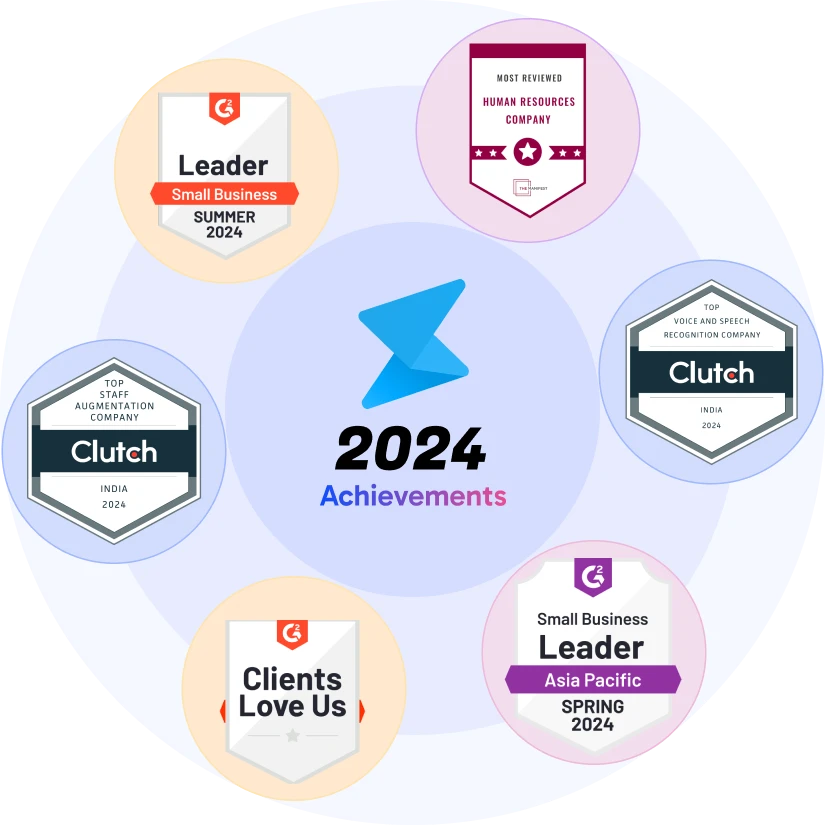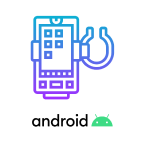
Hire Android App Developers
Struggling with delays, high costs, and finding the right talent? Supersourcing helps you hire top Android App developers, skilled in Java, Kotlin, and RESTful APIs, offering fast, efficient, and budget-friendly solutions to scale your app development projects.

Top Android Developers, Trusted by the Best in Business







Explore Our Expert Android Developers Tailored to Your Needs
Strategically hire Android app developers to seamlessly integrate their expertise into your projects, reducing communication hurdles, training needs, and future uncertainties.

Sr. Android Developer
 Super Dev
Super Dev
 $25/hour
$25/hour
 4.8
4.8
With 8+ years of experience in Java and Kotlin, Rahul has led...
With 8+ years of experience in Java and Kotlin, Rahul has led successful Android projects in fintech and healthcare, delivering apps with seamless user experiences and strong backend integration.

Sr. Android Developer
 Top Hire
Top Hire
 $28/hour
$28/hour
 4.0
4.0
Amit has 10+ years in native Android development...
Amit has 10+ years in native Android development. His e-commerce app has over 1M downloads, showcasing his expertise in creating high-performance, user-friendly applications.

Sr. Android Developer
 Top Hire
Top Hire
 $44/hour
$44/hour
 4.8
4.8
Megha specialises in developing engaging Android apps...
Megha specialises in developing engaging Android apps for the media industry with 6+ years of experience. Her focus on UI/UX has significantly boosted user engagement and retention.

Sr. Android Developer
 Super Dev
Super Dev
 $40/hour
$40/hour
 4.2
4.2
Kiran has 7+ years in Android development, excelling...
Kiran has 7+ years in Android development, excelling in travel apps with intuitive interfaces and smooth performance. His expertise includes Java, Kotlin, and RESTful API integration.

Android Developer
 Super Dev
Super Dev
 $28/hour
$28/hour
 4.8
4.8
With 9+ years of experience, Nikhil has built secure, scalable Android...
With 9+ years of experience, Nikhil has built secure, scalable Android apps for the finance sector. His recent work on a banking app is praised for its robust security and user-friendly design.

Sr. Android Developer
 Super Dev
Super Dev
 $45/hour
$45/hour
 4.8
4.8
Siddharth has 5+ years in developing Android apps with a focus...
Siddharth has 5+ years in developing Android apps with a focus on performance and scalability. His education sector apps are known for their innovative features and smooth functionality.

Android Developer
 Super Dev
Super Dev
 $42/hour
$42/hour
 4.2
4.2
Sneha has 11+ years of experience in building Android apps for...
Sneha has 11+ years of experience in building Android apps for health and wellness. Her reliable, high-quality apps are trusted by users for their exceptional performance and design.

Android Developer
 Super Dev
Super Dev
 $30/hour
$30/hour
 4.8
4.8
Rohan, with 14 years in Android development, specialises...
Rohan, with 14 years in Android development, specialises in enterprise apps with complex cloud integrations. His deep understanding of Android frameworks has driven the success of numerous high-impact projects.
Why Do Businesses Love Supersourcing to Hire Android app Expert
We are dedicated to making your tech talent hiring process more effective and successful. Our team is committed to ensuring client satisfaction by providing top-notch recruitment services that identify and attract the best Android app developers for your organization.

Hire in 72 Hours
After receiving your requirements for review and hire, we will promptly present pre-vetted Android app developers' profiles within 72 hours.

Drop-off Ratio < 1%
At Supersourcing, we take pride in our less than 1% drop-off ratio of Android app programmers, which ensures that you find the perfect fit for your hiring needs.

AI Screening
We are committed to reducing bias and providing the top Android developers for your hiring needs. To achieve this, we utilise AI screening to assess candidates thoroughly.

Dedicated Account Manager
We provide a dedicated account manager to ensure successful Android dev team building and smooth collaboration with your developer.
Our Android developers bring a wealth of experience in creating dynamic, high-performance apps. They specialise in crafting custom solutions that not only meet your business needs but also exceed your expectations, driving your digital success.
We prioritise the security of your app’s code. Our developers follow best practices in secure coding, ensuring that your applications are protected against vulnerabilities and threats.
Skip the traditional hiring hurdles. We charge no hiring fees and provide a streamlined onboarding process to get your developers up and running in no time, saving you valuable time and resources.
Our team of seasoned Android professionals is adaptable and responsive, providing flexibility to handle projects of any scale. Whether you need to build a new app or enhance an existing one, our experts are ready to deliver.
We ensure that our Android developers integrate effortlessly with your existing systems and teams. Their expertise in seamless integration helps minimise disruption, making your transition smooth and efficient.
Mitigate project risks by hiring our pre-vetted Android developers. They follow best practices in code quality and project management, ensuring a seamless and secure development process.
Our developers streamline your project timelines with well-defined methodologies and efficient workflows, delivering your apps faster without compromising on quality.
Data security is our priority. Our developers adhere to the highest security standards to protect your sensitive information, ensuring your app is secure at every stage of development.
Benefit from flexible contracts and transparent pricing with zero hiring fees. Our efficient onboarding process ensures you can start your project quickly, without any hidden costs.
Seamlessly Hire Skilled Android App Developers for Your Team!
At Supersourcing, we understand that finding the right Android app developers is crucial to your project’s success. Our streamlined hiring process ensures you connect with top-tier talent tailored to your specific needs.

Specify Your Requirements
We'll set up an exploratory call to deeply understand your needs and objectives.
We will provide the best Android engineers
Get access to deeply vetted profiles that perfectly match your requirements.
Conduct Interviews
Interview and select the top vetted Android app developers that you deemed fit.
Seamless Onboarding
Kick start your project immediately, while we take care of onboarding formalities.
Strategic Hiring Partner for Every Tech Need!
Outsource your recruitment process or project to us, and we’ll ensure you hire Android app developers who are right for your business. We also can streamline your custom software product infrastructure.

Hire android developers who work with you full-time on a contract basis. We will manage all the hiring and post-hiring formalities.
Contact Sales
If you like the work of the Android app developers you are working with, you can hire them permanently on your payroll after a certain period.
Contact Sales
We also help you hire Android app engineers permanently for an in-house role 10X faster.
Contact SalesHow Supersourcing's Android Developers Can Transform Your Business
Unlock the potential of your ideas with Supersourcing's expert Android developers. Our comprehensive range of services empowers you to create, launch, and maintain successful Android applications while minimising risks and uncertainties in your development journey.

Strategic Consultation for App Development
Strategic Consultation for App Development
Gain insights from our expert Android developers who align your app ideas with user expectations. They will guide you in choosing the best development strategies to ensure your app stands out in the marketplace.

Creating Stunning UI/UX Designs
Creating Stunning UI/UX Designs
Our developers specialise in crafting captivating and user-friendly interfaces. They design tailored UI/UX experiences that boost user engagement and satisfaction, making your app appealing to a diverse audience.

Custom Android Application Development
Custom Android Application Development
With expertise in Java, Kotlin, and RESTful APIs, our developers build robust and scalable custom Android apps. They collaborate closely with you to ensure your app not only functions flawlessly but also represents your unique brand identity.

Embedded Android App Development
Embedded Android App Development
Utilise the skills of our developers to build embedded Android apps for smart devices. They leverage AI and cloud technologies to create seamless solutions that optimise and control your wearable and smart premises.

Comprehensive Software Testing
Comprehensive Software Testing
Quality is our first priority. Our developers conduct thorough testing, both manual and automated, to ensure your app is secure, reliable, and ready for deployment, providing a seamless experience for your users.

Reliable Ongoing Support and Maintenance
Reliable Ongoing Support and Maintenance
Keep your app running smoothly with ongoing support from our dedicated android developers. They ensure your app remains updated, secure, and compatible with the latest Android versions, providing a hassle-free experience for you and your users.
Why Supersourcing anyway?
Supersourcing is an AI recruitment platform that helps you skip CV screening and tedious interview rounds, and save up to 90% time by either hiring a software engineer or your entire engineering team with us.

Guide to Hire Android Developers
What skills should I look for in an Android developer?
- Proficiency in Java and Kotlin: These are the primary programming languages for Android development.
- Familiarity with Android SDK and APIs: A strong understanding of Android's software development kit (SDK) and APIs is crucial for creating efficient apps.
- Experience with RESTful APIs: To enable communication between the app and external servers.
- UI/UX Skills: Knowledge of Android design principles to build apps with intuitive and user-friendly interfaces.
- Experience with Android Studio: Proficiency in the Android development environment for coding, debugging, and deploying apps.
- Version Control: Expertise in Git or similar tools for managing and tracking changes in code.
- Problem-Solving Abilities: Strong analytical skills to troubleshoot and resolve app performance or functionality issues.
- Security Best Practices: Familiarity with app security to ensure data protection and privacy for users.
What factors influence the cost of hiring Android developers?
Here are the key factors that influence the cost of hiring Android developers:
- Experience Level: Junior, mid-level, or senior developers with more experience tend to charge higher rates.
- Geographic Location: Developers from regions with higher living costs (e.g., the US or Western Europe) charge more than those from regions like India or Eastern Europe.
- Project Complexity: More complex projects requiring advanced skills (e.g., AI integration, advanced security) will increase the cost.
- Developer’s Skill Set: Developers with specialised skills in frameworks, APIs, or unique technologies can demand higher pay.
- Engagement Model: Full-time hires, freelancers, or contract-based developers can have varying costs, with freelancers often being more flexible.
- Project Timeline: Tight deadlines or rushed projects may lead to higher costs for faster delivery.
- App Features: The number and complexity of app features (e.g., third-party integrations, real-time updates) affect the cost.
- Team Size: Larger development teams or collaboration with other specialists (e.g., UI/UX designers) can raise the overall cost.
See What Our Clients Have to Say

“I recently had an opportunity to work with Supersourcing when I was hiring for my company. It was a great experience! They have such a wide variety of qualified React engineers , and they responded to my request very quickly.”
“We thought hiring 100+ engineers would be extremely hard, but the team at Supersourcing was able to deliver on time with no hiccups. All of the engineers were experienced and good communicators. Post sales support is also amazing.”


“We want to outsource one product development part, we were not looking for freelancers, already burnt our hand on freelancers. I checked the platform, contacted a couple of teams, good curation is done, we decided to go with one. Highly recommended, this is 10X better than other freelance platforms available in the market, with no commission."
Find the Right Expert
-
350+ Large Comp. Partnered
-
Hired 7000+ Developers
-
On-site, Remote, Hybrid
FAQs
At Supersourcing, we understand that project requirements can evolve. You can discuss any changes with your dedicated account manager, and our team will work to accommodate these adjustments, ensuring that your project stays on track.
Yes, Supersourcing allows you to hire Android developers for short-term projects. You can choose a project-based engagement model to meet your specific timelines and needs.
Supersourcing streamlines the hiring process, enabling you to connect with and onboard Android developers within a few days. We understand the importance of timelines and work to minimise delays in starting your project.
Android developers from Supersourcing are well-equipped to handle a range of projects, including web applications, enterprise software, mobile apps, and cloud-based solutions. They can also contribute to cross-platform development and microservices architecture.
Supersourcing prioritises data security and confidentiality. We have strict NDAs and security protocols in place to protect your project information, ensuring that only authorised personnel have access to sensitive data.



































